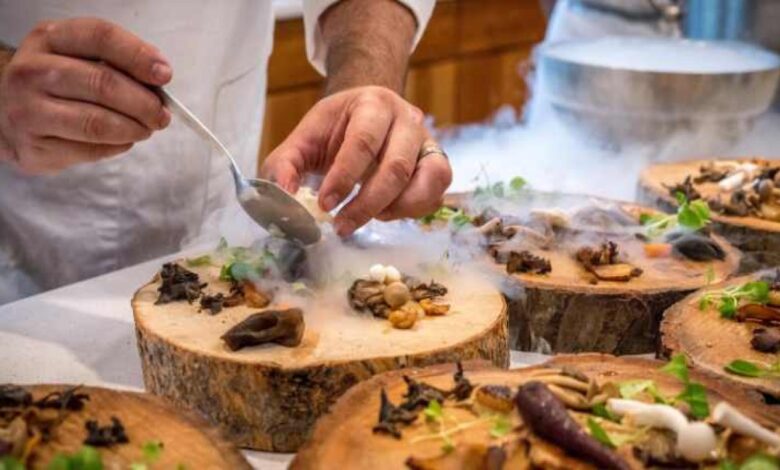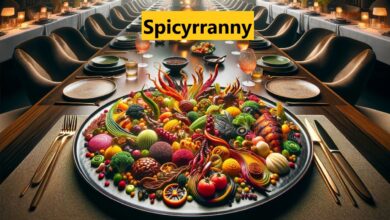Çeciir: Revealing the Historical Culinary Treasure

Çeciir, a historical culinary treasure, holds a special place in the hearts and kitchens of many cultures worldwide. This humble legume, known for its versatility and nutritional value, has been a staple for centuries. Let’s delve into the rich history, culinary uses, nutritional benefits, and cultural significance of Çeciir.
Introduction to Çeciir
Çeciir, also known as chickpeas or garbanzo beans, is a legume that traces back to the Middle East and Mediterranean regions. It has been cultivated for thousands of years and is believed to be one of the earliest crops domesticated by humans.
Historical Significance
Throughout history, Çeciir has played a crucial role in various cuisines and cultures. Its cultivation can be traced back to ancient civilizations such as the Egyptians, Greeks, and Romans. Çeciir was prized for its ability to provide sustenance during times of scarcity and its contribution to the region’s culinary diversity.
Culinary Uses
Çeciir is a versatile ingredient used in a wide range of dishes. It adds depth and flavor to countless recipes, from hearty stews and soups to savory snacks and desserts. Traditional dishes like hummus, falafel, and chana masala showcase the culinary prowess of Çeciir.
Nutritional Value
In addition to its culinary versatility, Çeciir is packed with essential nutrients. It is an excellent protein, fiber, vitamins, and minerals source. Incorporating Çeciir into your diet can promote heart health, aid digestion, and support overall well-being.
Çeciir in Contemporary Cuisine
In modern times, Çeciir continues to captivate chefs and food enthusiasts alike. Its nutty flavor and creamy texture make it a favorite ingredient in plant-based cooking. From vegan burgers to gluten-free baking, Çeciir offers endless possibilities for creative culinary experimentation.
Harvesting and Processing
Traditionally, Çeciir is harvested by hand and dried before being stored or processed. However, modern agricultural practices have introduced mechanized harvesting and processing techniques to increase efficiency and yield.
Regional Variations
Across different cultures and regions, Çeciir is prepared and enjoyed in various ways. From the spicy chickpea curries of India to the comforting chickpea stews of the Middle East, each cuisine offers unique flavors and cooking methods that highlight the versatility of Çeciir.
Çeciir in Popular Culture
Beyond the kitchen, Çeciir has made its mark on popular culture. It has been celebrated in literature, art, and folklore as a symbol of prosperity, abundance, and hospitality. Its presence in cultural traditions and rituals further underscores its significance in society.
Sustainability and Environmental Impact
As demand for Çeciir continues to grow, there is a growing concern about its environmental impact. Intensive farming practices and monoculture can lead to soil degradation and loss of biodiversity. Sustainable farming methods, such as crop rotation and agroforestry, are essential for preserving the integrity of the ecosystem.
Challenges and Future Prospects
Despite its popularity, Çeciir faces challenges like climate change, pest infestations, and market fluctuations. However, ongoing research and innovation hold promise for addressing these issues and ensuring the continued cultivation and consumption of Çeciir for generations.
Conclusion
In conclusion, Çeciir is a testament to the enduring relationship between humans and the land. Its rich history, culinary versatility, and nutritional value make it a cherished ingredient in kitchens worldwide. As we continue to explore the potential of Çeciir, let us also strive to protect and preserve the traditions and ecosystems that sustain it.
Unique FAQs
Is Çeciir the same as chickpeas?
Çeciir is another name for chickpeas, commonly used in Mediterranean and Middle Eastern cuisines.
What are some creative ways to use Çeciir in cooking?
You can use Çeciir to make hummus, falafel, salads, soups, stews, curries, and even desserts like chickpea blondies or chocolate chickpea cookies.
Are there any health benefits to eating Çeciir?
Yes, Çeciir is a good protein, fiber, vitamins, and minerals source. It can help with weight management, digestion, and heart health.
How can I incorporate more Çeciir into my diet?
Add cooked Çeciir to salads, soups, and stews or use it as a base for veggie burgers and patties. You can also snack on roasted Çeciir or use chickpea flour in baking.
Is Çeciir environmentally friendly?
While Çeciir cultivation can have environmental impacts, sustainable farming practices can help mitigate these effects. Look for organic and ethically sourced Çeciir products to support environmentally friendly practices.
You May Also Read:




